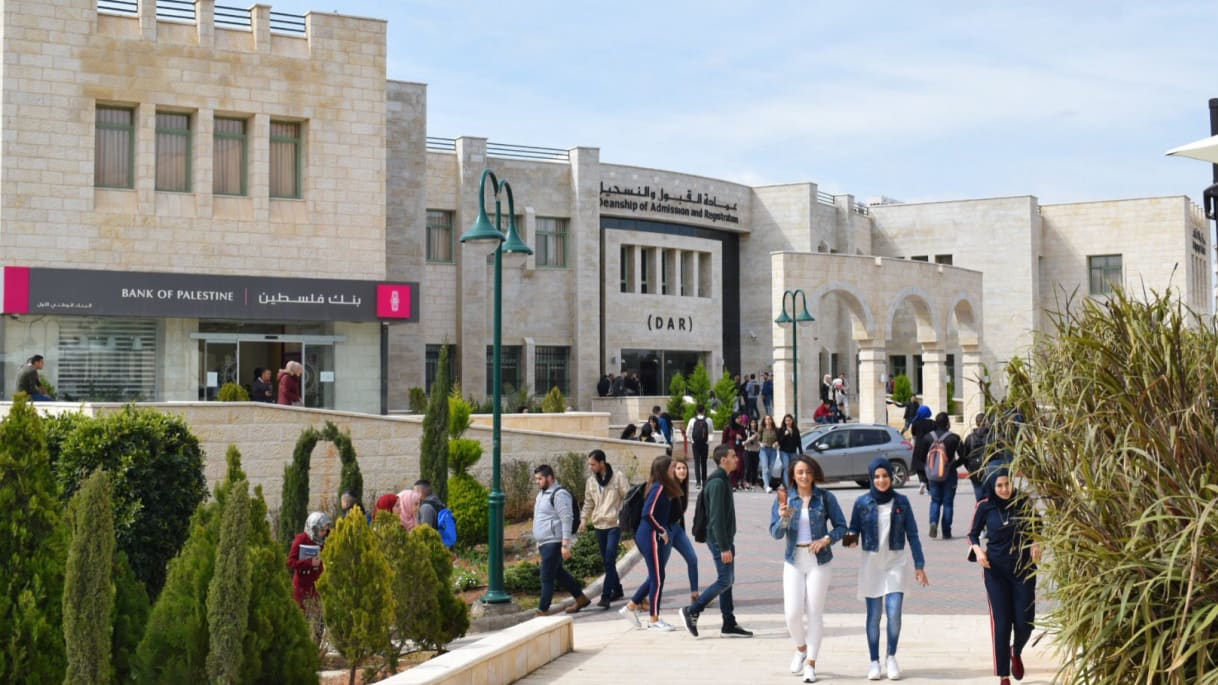Jenin’s Arab American University enrolled 6,215 Israeli Arabs, beating the former favorite University of Haifa

The institution of higher education with the largest number of Israeli Arab students is no longer one in Israel. Rather, it is the West Bank city of Jenin, part of the Palestinian Authority.
Arab American University in Jenin, a private institution operated in collaboration with California State University in Stanislaus and Utah State University, has 6,215 Israeli Arab students — far more than the 5,444 studying at the University of Haifa, which traditionally attracted more Israeli Arabs than any other institution in Israel.
The numbers come from a joint study conducted by the Aaron Institute for Economic Policy at the Herzilya Interdisciplinary Center and the Israeli Finance Ministry’s economic research unit.
The massive enrollment at Arab American University is a relatively new phenomenon. The school, founded in 2000, is the first and only private Palestinian university in the PA. In 2007, it enrolled just 35 Israeli Arabs, but the number doubled the following year and has continued to multiply.
Today, Israeli Arabs make up more than half of the university’s student body, is Israeli Arab, with an additional 5% coming from abroad.
The university charges annual tuition of 25,000 to 35,000 shekels ($7,000 to $9,900) and teaches in English. It offers various degree programs in health care, as well as in dentistry, nursing, law, social sciences, business, engineering and technology. It also offers medical studies, in conjunction with the University of Jordan.
Arab American University is part of a trend of Israeli Arabs studying outside of Israel, especially for medicine and related fields. Estimates based on figures from the health and education ministries are that 70% of all Israeli Arabs who were awarded dental licenses in 2014-15 were educated abroad. Other professions had lower but also unusually high number of foreign degree holders – 64% of pharmacists, 32% of physicians and 31% of physiotherapists.
At Arab American University, 81% of Israeli Arabs students were pursuing degrees in health care. Only 9% were studying education, 5% social sciences and the arts and 3% science.
“Since 2012, the rate of Arabs studying outside of Israel has grown 66% and as we understand it the principal reason is that there is a sharp divergence between the numbers interested in acquiring a degree in the health professions in Israel and the supply of available places in these areas at the universities,” said Zeev Krill, one of the study’s four authors.
The shortage of places at medical schools doesn’t just affect Israeli Arabs — large numbers of Israeli Jews fail to win a place at an Israeli institution and go abroad to study. But the problem is more pronounced for Israeli Arab students. They are attending universities and colleges more than ever, but their access remains restricted by a limited number of places and tough admission standards.
By creating a situation where so many Israeli Arabs go abroad for their degrees, Israel is losing control over the quality of studies, harming their ability to integrate into Israeli society and depriving of an opportunity to improve their Hebrew language proficiency, the study said.
All of this hurts Israel’s overall economic performance and deprives local universities of tuition revenue.
Many who pursue degrees are studying fields with little employment potential, a fact noted by Samer Haj Yehia, an Israeli Arab who was named chairman of Bank Leumi this month.
Speaking at a roundtable on the issue at Interdisciplinary Center, Herzliya in March, he said: “The Council of Higher Education in Israel achieved its goal of a 20% rate of Arabs in higher education, but everyone knows this achievement is misleading. That 20% includes a large percentage of students studying fields with no future, like the social sciences. They simply go from studying to unemployment.”
Israeli Arab applicants are handicapped by schools that get much smaller budgets from the national and local governments, according to the study. Their admission rate to Israeli medical schools is 23% versus 35% for Israeli Jews. For allied health professions, the rates are 36% and 60%, respectively.
Israelis Arab also have a harder time finding work once they have a degree. Among Jewish graduates, 60% find work in health care, while only 36% of Arab graduates do.
Many of those who aren’t admitted go abroad to study. “About a quarter of Arab students study outside Israel, the great majority in health care,” said Krill.
Krill and his fellow authors said the answer was to open a new medical school in Israel that will accept more Arab students, or at least to increase enrollment at the existing schools. The Council of Higher Education recently retreated from a plan to open the first college designed for Arabic speakers while plans to increase enrollments at medical schools have stalled.
But the researchers said the real solution was in the K-12 levels and in working to eliminate the gaps in resources and school performance between Jewish and Arab Israelis.
“For Arab society the schools are much more important than anything else for reducing gaps. Because their ability of parents to invest in their children’s education is small, the local authorities are weaker and Jewish students have youth groups and informal education to rely on,” said another researcher, Marian Tehawkho.
“To an Arab child, there’s only the school – and even there, there is less money and fewer good teachers because they are products of the same poor school system,” she said.
